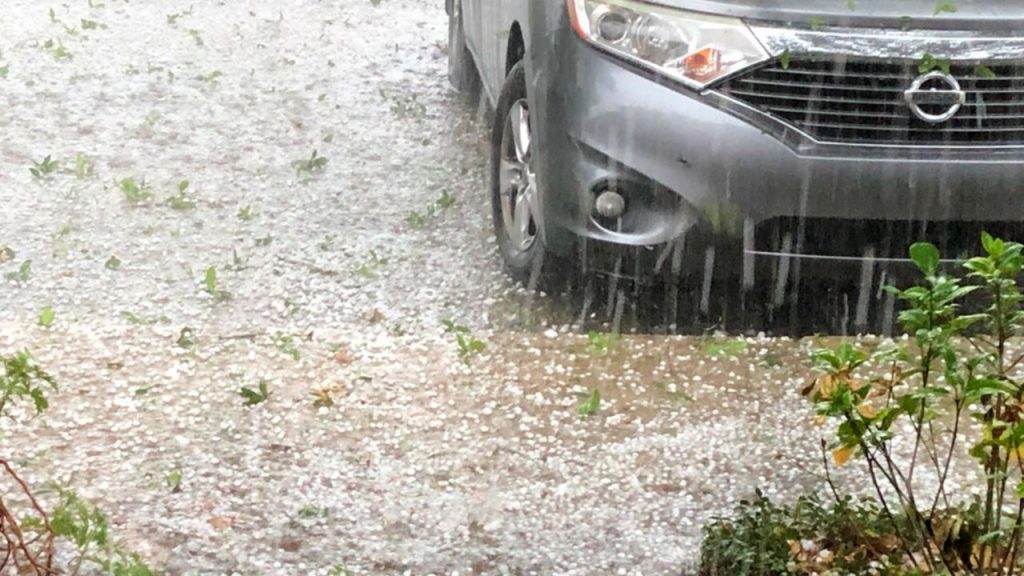Hailstorms are a natural phenomenon that can strike with little warning, leaving a trail of damaged vehicles in their wake. Understanding the science behind hail formation and the impact it can have on your car is the first step in safeguarding your vehicle against this unpredictable element. In this article, we’ll delve into the science of hail, offer tips on protecting your car, and discuss immediate steps to take after your vehicle has suffered hail damage.
The Formation of Hail: Hail is formed in strong thunderstorm clouds, particularly those with intense updrafts. These updrafts carry water droplets high into the atmosphere where temperatures are below freezing. These droplets then freeze and form tiny ice particles. As these particles descend, they collect more water, which freezes, adding layers and increasing their size. This process continues until the hailstones become heavy enough to fall to the ground.
How Hail Damages Vehicles: Hailstones can vary in size from small pellets to the size of a golf ball or even larger. When these ice balls fall from the sky, they can cause significant damage to vehicles. The extent of the damage depends on the hailstone’s size, density, and the speed at which it falls, as well as the type of material it impacts. Common damage includes dents on the car’s body, cracked or shattered windshields, and chipped paint.
Protecting Your Vehicle from Hail: Preventive measures are essential in minimizing hail damage:
- Stay Updated with Weather Reports: Keeping an eye on weather forecasts can help you prepare for potential hailstorms.
- Use Covered Parking: Whenever possible, park your vehicle in a garage or under a carport. If you don’t have access to covered parking, consider investing in a padded car cover.
- Blankets or Special Car Covers: In emergencies, thick blankets or hail car covers can be used to shield your vehicle from hail damage.
Immediate Steps After Hail Damage: If your vehicle does suffer hail damage, quick action is important:
- Document the Damage: Take clear photos of the damage from different angles. This will be crucial for insurance claims.
- Contact Your Insurance Company: Report the incident to your insurance provider as soon as possible. Be prepared to provide details and the photographs you took.
- Seek Professional Assessment: Consult an auto body shop specializing in hail damage repair to assess the extent of the damage.
Understanding Hail Damage Repair Options: Hail damage can be repaired using various methods, depending on the severity of the damage. For minor dents and dings, Paintless Dent Repair (PDR) is often the best option. It’s less invasive, maintains the original paint, and is cost-effective. For more severe damage, traditional bodywork might be necessary.
Long-Term Impacts of Hail Damage on Vehicles: Unrepaired hail damage can have long-term effects on a vehicle, including:
- Reduced Vehicle Value: Dents and dings can significantly decrease a car’s resale value.
- Rust and Corrosion: Chipped paint from hail can lead to rust and corrosion, which can weaken the vehicle’s body and lead to more serious problems.
Preventive Measures for Future Protection: To mitigate future hail damage:
- Invest in a Quality Car Cover: A high-quality hail-proof car cover can absorb the impact of hailstones.
- Regularly Check Weather Forecasts: Staying informed about potential hailstorms can help you take proactive measures.
- Consider Hail Insurance: Ensure your vehicle insurance covers hail damage. This can save you significant costs in the long run.
Hailstorms are a potent force of nature that can cause significant damage to vehicles. Understanding the science behind hail formation and taking proactive measures can help minimize damage. In the event of hail damage, quick action is necessary to ensure a smooth insurance claim process and repair. Remember, the longevity and value of your vehicle depend not just on regular maintenance but also on how well you protect it from nature’s unpredictable elements.

